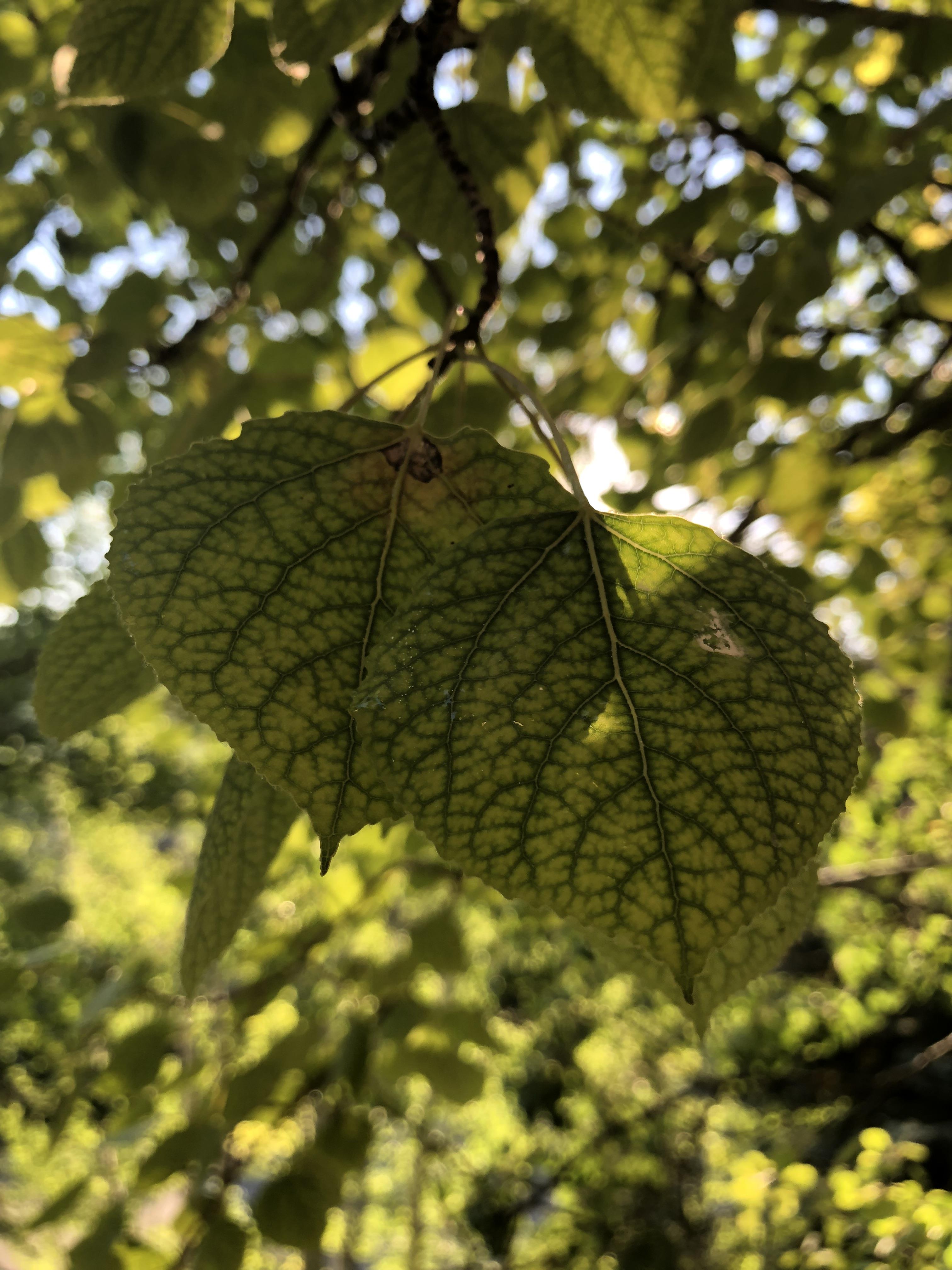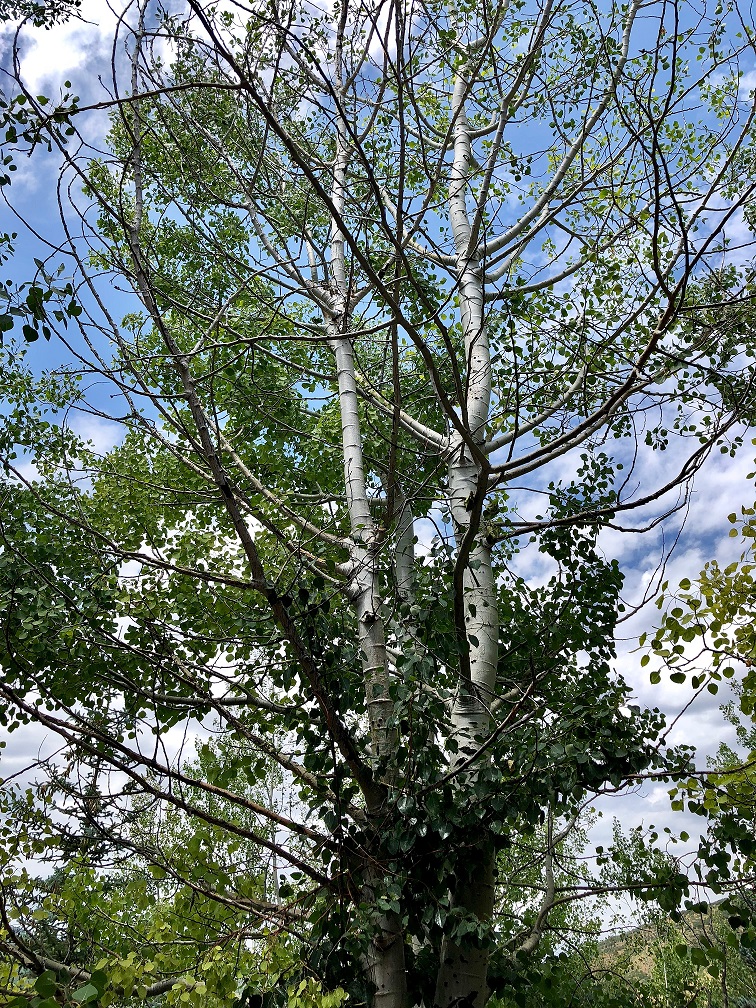Ask an Expert
Question from Richard, Summit County, UT -
Hello. I hope you don’t mind me sending you these photos of my sick aspen. We’ve had a few trees “die” and then leaf out again with new branches at the point where the main tree died. The new leaves are covered with sticky, but I don’t see aphids. They are planted in clay soil. Do you have any ideas about what the issue is and about treatment.


Answer from Dr. Mike Kuhns, USU Extension Forester and Professor -
Richard,
Aspens have lots of problems, mostly because they do not put any energy into protecting themselves. Your trees appear to have poplar borers in them, which weakens and kills branches and trunks. The first picture looks like iron chlorosis, which is caused mainly by high soil pH. Stickiness would most likely be related to aphids, but stick material oozing from the trunk could be from the borer exit and entrance holes, but also possibly from stem canker, a fungal disease.
You might want to read this fact sheet on growing aspen.
There really are no practical treatments for aspens because most of the problems they have are not readily treatable. For example, you can’t keep aspens from getting stem cankers and those are very serious problems for aspens. You can have trees sprayed with insecticide to coat the bark to discourage borer entry, but success is hit and miss and it can be quite expensive, plus you would have to do it every year or two. Also such sprays have no effect on borers already in the trees. Chlorosis is treatable by adding iron chelates to the soil, but again it would be fairly expensive and would have to be done every year. Actually the chlorotic leaves you send a picture of are likely chlorotic not due to the soil pH, but I suspect that branch or tree was very stressed by other problems. Irrigating is a good treatment, since most of aspens’ problems are made worse by water stress, but usually large scale irrigation is not practical and it won’t help the already heavily damaged trees. The best treatment is to cut down the oldest trees with the most problems, which will encourage sprouting from the roots. The new sprouts are much more vigorous than the old trees. You can retain the healthier of the big trees, then you can thin the sprouts. The factsheet I cited (above) describes this process.

